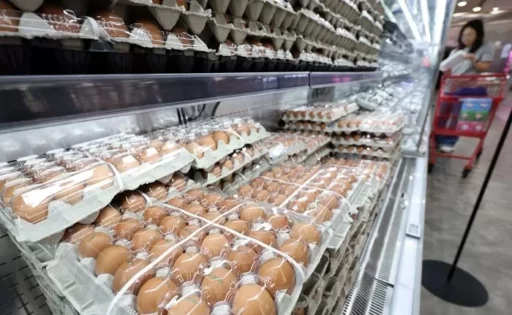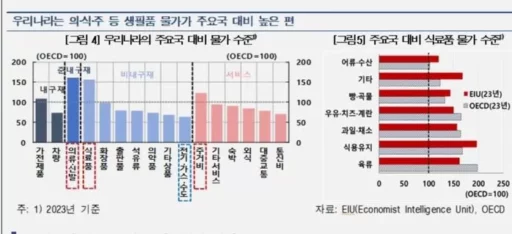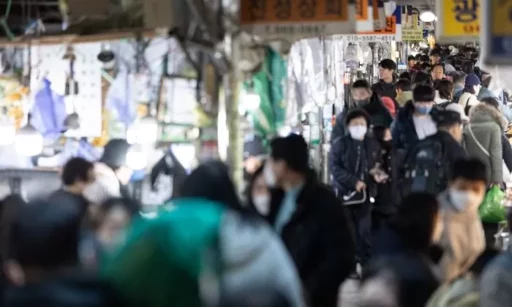Essential living costs in Korea are higher than the OECD average, hindering consumer recovery.
Analyses suggest that Korea's essential living costs remain higher than those of major advanced countries, presenting a barrier to consumer recovery.
According to a report titled "Recent Trends in Living Costs and Level Evaluation" released by the Bank of Korea on the 18th, the cumulative increase in living costs focused on essential goods from 2021 to May 2025 is 19.1%, outpacing the consumer price inflation rate (15.9%) by 3.2 percentage points.

The rise in living costs is attributed to a combination of factors such as the pandemic, international conflicts, and worsening climate conditions. These factors have led to skyrocketing prices for food and energy, and more recently, the price increases of processed foods have reflected the rising costs of imported raw materials and exchange rates, resulting in sustained high price levels overall.
In 2023, when the average price in the OECD is set at 100, South Korea's food index is 156, clothing is 161, and housing costs are 123, significantly exceeding the global average.
Statistics from the UK economic analysis firm, the Economist Intelligence Unit (EIU), also show that the prices of fruits, vegetables, and meats in Korea are more than 1.5 times the OECD average.
The cycle of high living costs leading to reduced consumer spending.
Such high living costs especially affect vulnerable groups, exacerbating their perception of inflation and leading to reduced consumption.

Since 2021, nominal purchasing power (labor income) has failed to keep pace with rising prices, resulting in an average real purchasing power growth rate of only 2.2% from 2021 to the first quarter of 2025. This figure is notably lower than the pre-pandemic period (2012-2019) average of 3.4%.
In a Bank of Korea survey conducted from January to April this year, 62% of respondents who did not increase their consumption expenditures cited "decreased purchasing power due to rising prices" as the main reason.
The Bank of Korea expressed concern that "if the high living cost continues to make households feel elevated price levels, it could influence household inflation expectations and undermine price stability in the medium to long term."
As solutions, the Bank of Korea proposed relaxing regulations, promoting market competition, diversifying imports of raw materials, and expanding import tariffs.

In the accompanying report titled "Assessment of Price Pressure from Processed Foods and Personal Services," it was revealed that the contribution of the overall consumer price increase rate of processed foods and personal services items reached 1.4 percentage points last month. This signifies that 74.9% of the overall consumer price increase last month originated from processed foods and personal service items.
The Bank of Korea analyzed that "since 2020, the increase in prices of imported raw materials and intermediate goods and the rise in the won/dollar exchange rate, along with the resulting domestic intermediate goods price increases, have significantly raised the input costs for companies." It further explained, "In particular, for processed foods and personal service items, the prices of domestically produced intermediate goods used in the production process continue to rise, and recently, the prices of major imported intermediate goods such as agricultural, fishery, and food products have also increased, leading to a sustained upward trend in input prices."
Image source: Reference photos for understanding the article / News1, photo provided by the Bank of Korea.


